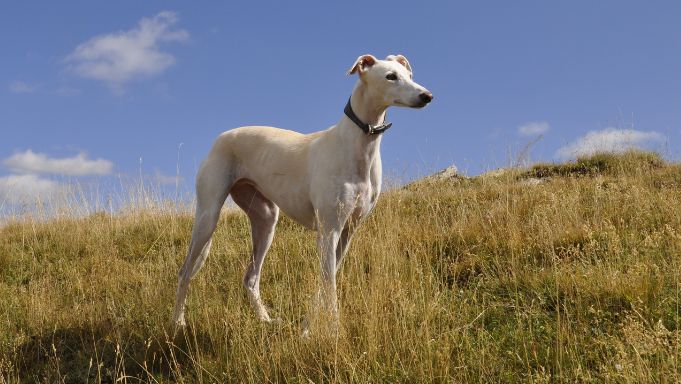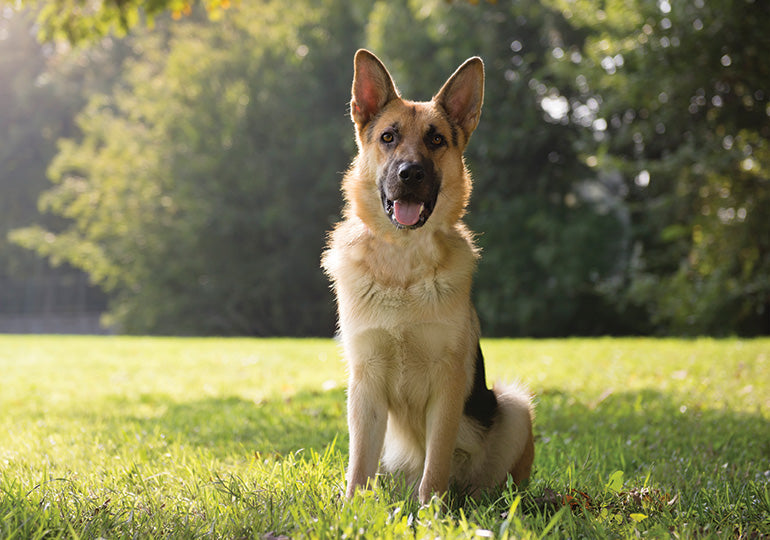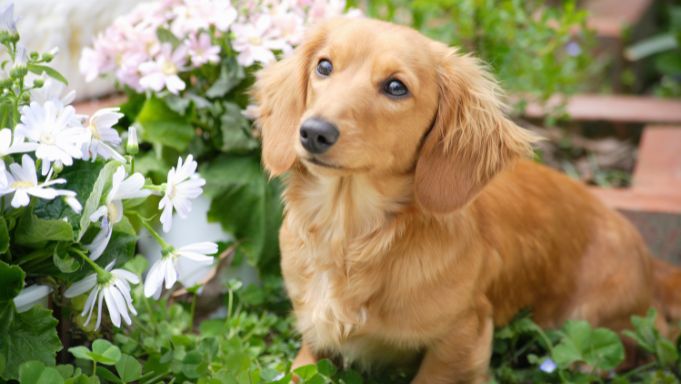
Greyhound Dog Breed: Temperament, Care & Adoption (Expert Tips)
Elegant, gentle, and surprisingly lazy, the Greyhound is one of the oldest and most graceful dog breeds. Known for their lightning speed and calm demeanour at home, these dogs are just as happy sprinting on a track as they are snoozing on the couch.
Greyhounds are also one of the most commonly adopted breeds in Australia through rehoming programs, and their relaxed, gentle temperament has earned them a loyal following among Aussie families.
Quick Facts Overview
|
Trait |
Details |
|
Size Category |
Large |
|
Height & Weight |
Height: 68–76 cm; Weight: 27–40 kg |
|
Coat Type & Colours |
Short, smooth coat; variety of colours including black, fawn, blue, and brindle |
|
Energy Level |
Moderate (burst energy) |
|
Origin |
Middle East / Egypt (ancient) |
|
Grooming Needs |
Low |
|
Temperament |
Calm, gentle, reserved, affectionate |
|
Trainability |
High (with patience) |
|
Compatibility |
Great with families, pets, and respectful children |
|
Lifespan |
10–14 years |
Breed Origins and History
The Greyhound is one of the most ancient dog breeds, with roots tracing back over 5,000 years to ancient Egypt. Historically revered by royalty and nobility, they were bred for hunting game thanks to their unmatched speed and keen eyesight.
In modern times, they’re often associated with racing and rescue adoption, especially in Australia through programs like the Greyhound Adoption Program NSW and GAP Victoria. Their core traits of grace and gentleness remain, making them ideal family pets.
Personality and Temperament
Greyhounds are surprisingly calm and affectionate. Despite their athletic appearance, they’re often described as "couch potatoes" at home, sleeping up to 20 hours a day. Their temperament is gentle and reserved, especially with new people, but once bonded, they are loyal companions.
They generally get along well with other dogs and prefer peaceful environments over chaos. Their quiet, clean habits also make them well-suited to apartment living.
Trainability and Intelligence
Greyhounds are intelligent and eager to please, though they can be a little sensitive. They respond well to positive reinforcement and do best with a calm, consistent approach.
Off-leash recall can be tricky due to their strong prey drive, so early training is essential.
Recommended Gear:
Exercise and Activity Requirements
-
Daily walks and short sprints are ideal
-
Greyhounds enjoy running in secure, fenced areas
-
Mental enrichment with toys or gentle play sessions
Greyhounds do not need as much exercise as people expect. A couple of 20–30 minute walks a day, with access to a fenced yard for zoomies, is usually enough.
Their "couch potato" lifestyle makes them easy to manage indoors, despite being a large breed.
Recommended Gear:
Physical Characteristics
-
Long, lean, aerodynamic body
-
Deep chest and tucked-up waist
-
Long neck and narrow head
-
Short, smooth coat in various colours
Despite their size, Greyhounds are quiet and graceful indoors. Their delicate skin needs soft bedding to avoid pressure sores.
Recommended Gear by Size:
Living Environment Suitability
Greyhounds are adaptable and do well in both apartments and houses, provided they get their daily walks. They're generally quiet indoors and love a cosy bed.
They dislike cold weather due to their thin coat, so jackets are a must in winter. Note: some local councils in Australia still require ex-racing Greyhounds to wear muzzles in public unless formally exempted—always check your state regulations.
Recommended Gear:
Grooming and Maintenance
-
Weekly brushing with a soft mitt or grooming glove
-
Occasional baths
-
Regular nail trimming and ear checks
Their grooming needs are low, but Greyhounds do have sensitive skin. A quality soft collar and gentle grooming tools help prevent irritation.
Recommended Grooming Gear:
Common Health Issues
-
Bloat (gastric torsion)
-
Osteosarcoma (bone cancer)
-
Hypothyroidism
-
Sensitivity to anaesthesia
Greyhounds are also prone to thin skin injuries and pressure sores due to their low body fat. Retired racers may arrive with dental problems and previous injuries. Regular vet checks and soft resting spaces are essential.
Recommended Health Gear:
Diet and Feeding Guidelines
-
Feed twice daily to prevent bloat
-
Choose high-quality, easily digestible food
-
Monitor for food sensitivities and weight changes
Greyhounds often have fast metabolisms and need proper portion control. Some are picky eaters, so finding a diet that suits their digestion is key.
Recommended Feeding Gear:
Compatibility with People and Other Pets
-
Children: ★★★★☆ (gentle kids preferred)
-
Other Dogs: ★★★★★ (especially other sighthounds)
-
Cats: ★★★☆☆ (varies; some need training)
Greyhounds are generally peaceful and affectionate. Many retired racers adjust beautifully to family life but may need desensitisation around smaller animals.
Recommended Social Gear:
Behavioural Issues and Management
-
Separation anxiety
-
Prey drive (chasing small animals)
-
Nervousness in new environments
Greyhounds benefit from calm routines, a predictable environment, and confidence-building activities. Crate training and soft bedding can ease transitions.
Helpful Gear:
Essential Gear for Greyhounds
Walking:
Style & ID:
Training:
Travel:
Climate Protection:
Personalised Gear:
FAQs: Greyhound Dog Breed
1. Is a Greyhound a good family dog?
Yes, Greyhounds make excellent family pets. They are gentle, quiet, and affectionate. Despite their athletic background, they are calm indoors and get along well with children and other dogs when properly socialised.
2. Do Greyhounds bark a lot?
Greyhounds are typically quiet dogs. They’re not known for excessive barking and are generally reserved, especially in calm home environments. However, like any breed, they may bark if bored or under-stimulated.
3. Are Greyhounds high maintenance?
Greyhounds are relatively low-maintenance. Their short coat requires minimal grooming, and they are naturally clean. However, they do need daily walks, soft bedding due to their lean bodies, and protection from cold weather.
4. Are Greyhounds aggressive?
No, Greyhounds are not considered aggressive. They are known for their gentle and friendly nature. Like any breed, they benefit from early training and proper socialisation, but aggression is uncommon.
5. Can Greyhounds be left alone?
Greyhounds can be left alone for a few hours, especially if they’ve been trained and have a comfortable, quiet environment. However, they are companion dogs and can develop separation anxiety if left alone too often or for too long.
6. Do Greyhounds like to cuddle?
Many Greyhounds enjoy cuddling and will happily lie close to their humans. While they aren’t clingy, they often seek out company and physical closeness, especially when resting or relaxing at home.
7. Can Greyhounds go on long walks?
Yes, Greyhounds can handle long walks if conditioned gradually. They are sprinters by nature but enjoy steady walks as part of a daily routine. They also benefit from free-running in secure, enclosed spaces.
8. Do all Greyhounds need muzzles?
In some regions, especially Australia, ex-racing Greyhounds are legally required to wear muzzles in public until assessed for rehoming. However, not all Greyhounds need muzzles, and many live muzzle-free after passing a temperament test.
9. Is a Greyhound a good beginner dog?
Yes, Greyhounds are often recommended for first-time dog owners. They are calm, clean, easy to train, and adapt well to home life. Their relaxed nature makes them ideal for those looking for a low-fuss, affectionate dog.
10. What are the disadvantages of a Greyhound?
Some challenges include sensitivity to cold, a need for soft bedding, and limited off-leash freedom due to prey drive. They may also require a slow transition into home life if adopted from a racing background.
11. What is the difference between a Whippet and a Greyhound?
Whippets are smaller versions of Greyhounds. They share a similar body shape and temperament, but Whippets are more suited to smaller homes or apartments. Greyhounds are taller and stronger, while Whippets are a bit more energetic indoors.
Final Thoughts
The Greyhound combines elegance and speed with gentleness and affection. Whether you’re adopting a retired racer or buying a puppy, this breed makes a loyal, relaxed, and surprisingly low-maintenance companion.
Looking for soft collars, supportive beds, or stylish leads for your Greyhound? Visit EzyDog to find gear built for comfort and performance.




Leave a comment
This site is protected by hCaptcha and the hCaptcha Privacy Policy and Terms of Service apply.